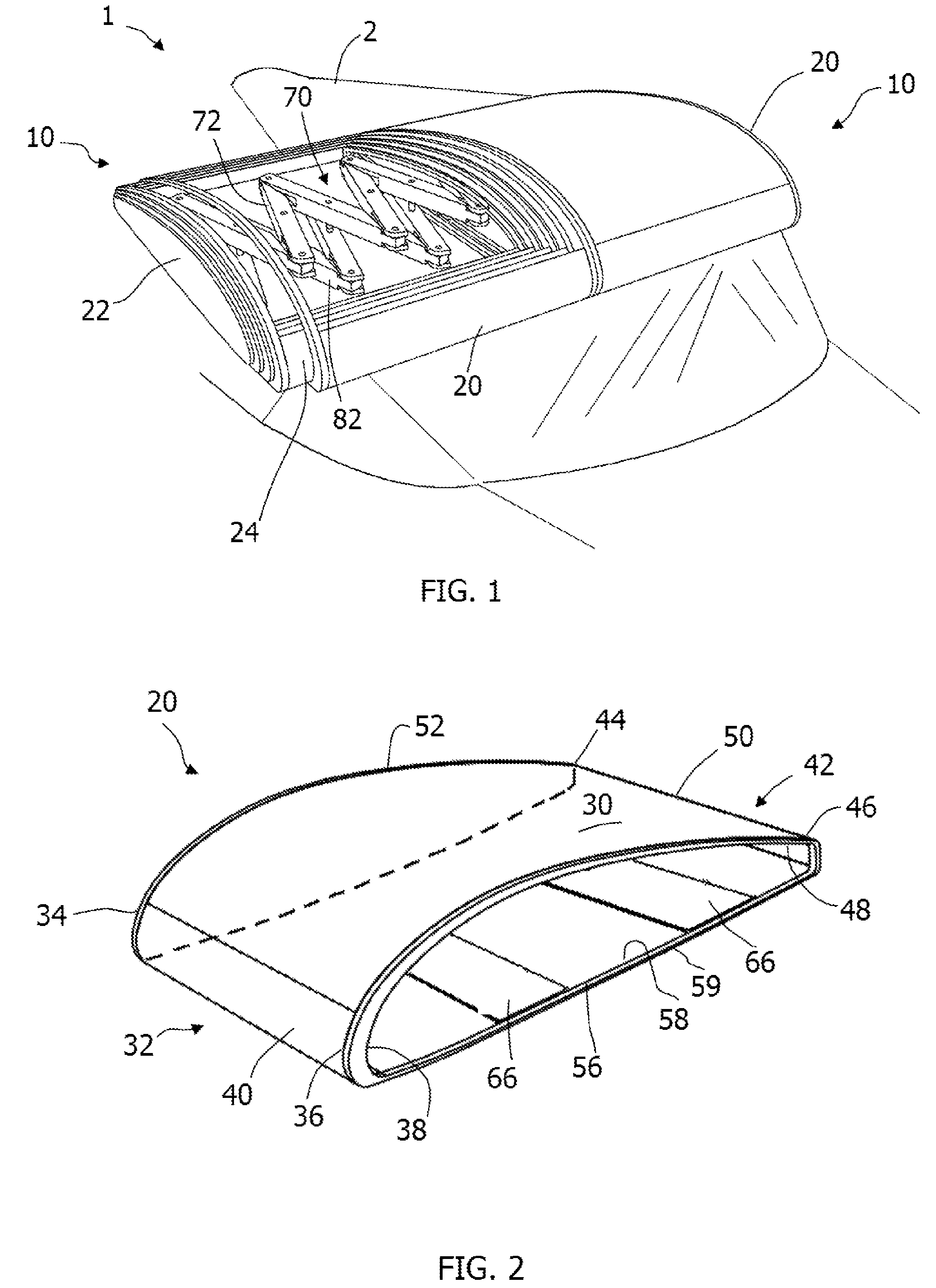Telescopic wing with articulated structural spar
a technology of articulating structure and wing, which is applied in the direction of canard-type aircraft, transportation and packaging, aircraft convertible vehicles, etc., can solve the problems of difficult movement and storage of aircraft, the wing of foldable aircraft would experience significant adverse wind loading on its wings, and the wing of foldable aircraft is not well suited to use with roadable aircraft, etc., to achieve the effect of enhancing the rigidity of the spar assembly
- Summary
- Abstract
- Description
- Claims
- Application Information
AI Technical Summary
Benefits of technology
Problems solved by technology
Method used
Image
Examples
Embodiment Construction
[0040]Referring to the drawings, the invention will be seen to most generally comprise a telescopic aircraft wing having an articulated structural spar that connects a tip portion of the aircraft wing to a root portion of the aircraft wing for telescopic retraction of the tip portion into the root portion.
[0041]As shown in FIG. 1, a telescopic wing 10 according to a first embodiment of the invention moves between an extended position, to allow the telescopic wing 10 may be used as a flying surface, and a retracted position, to allow for storage of the telescopic wing 10. In particular, a pair of the telescopic wings 10 may be connected to the fuselage 2 of an aircraft 1 in a side-by-side configuration for use as the primary flying surfaces of the aircraft 1. It is particularly contemplated that the telescopic wing 10 is applicable to aircraft 1 that are designed to be convertible for use either as an airplane or as a road-worthy surface vehicle. However, it should be understood that...
PUM
 Login to View More
Login to View More Abstract
Description
Claims
Application Information
 Login to View More
Login to View More - R&D
- Intellectual Property
- Life Sciences
- Materials
- Tech Scout
- Unparalleled Data Quality
- Higher Quality Content
- 60% Fewer Hallucinations
Browse by: Latest US Patents, China's latest patents, Technical Efficacy Thesaurus, Application Domain, Technology Topic, Popular Technical Reports.
© 2025 PatSnap. All rights reserved.Legal|Privacy policy|Modern Slavery Act Transparency Statement|Sitemap|About US| Contact US: help@patsnap.com



